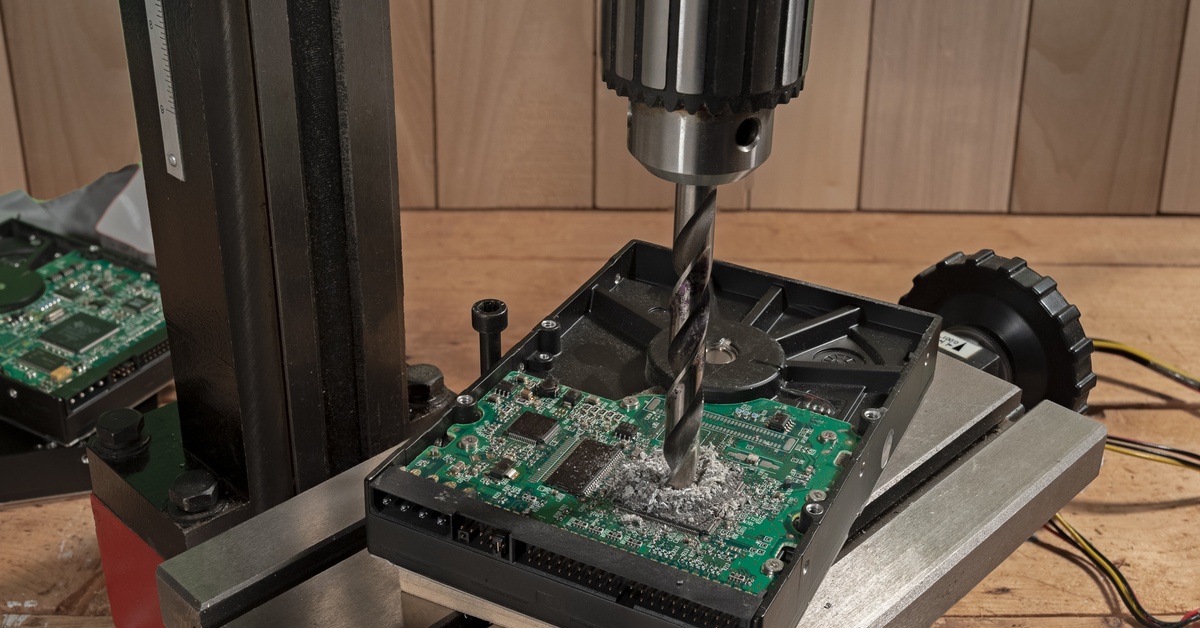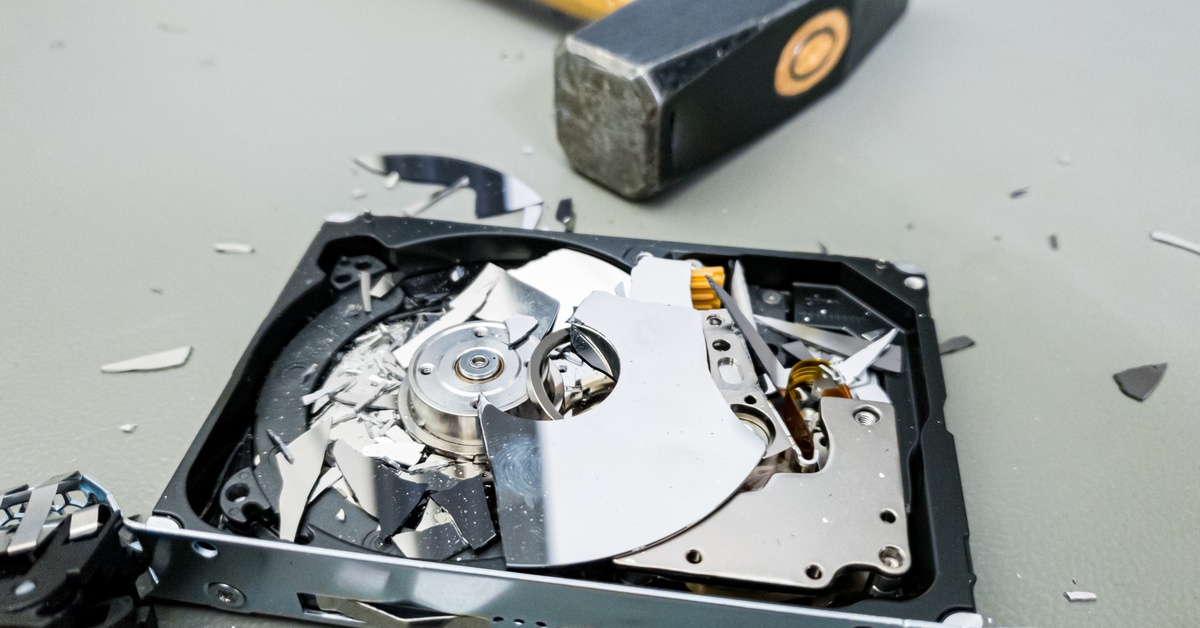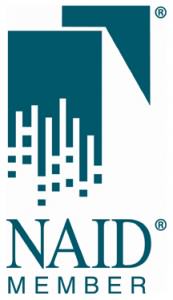
For businesses of all types, data security is a necessity. With cyber threats evolving and data breaches becoming increasingly common, safeguarding sensitive information remains critical for individuals and businesses alike.
While significant attention is placed on firewalls, encryption, and secure cloud storage, physical storage devices like hard drives are often overlooked. However, improperly disposing of hard drives can expose you to serious risks, from identity theft to corporate espionage. Learn why hard drive destruction is crucial for data security, how it works, and how to ensure compliance with legal requirements.
Who Relies on Hard Drives?
Hard drives are essential components for data storage across multiple industries. Despite the growth of cloud-based storage, physical hard drives remain widely used due to their reliability, security, and capacity for local storage.
These are some of the industries that benefit from hard drives:
- Healthcare: Hospitals store patient medical records, insurance details, and billing information on hard drives.
- Finance: Banks and financial institutions keep customer account details, credit card records, and transaction histories on local storage devices.
- Education: Universities and schools maintain student records, transcripts, and research materials on hard drives.
- Legal services: Law firms store sensitive case files, client information, and employee data on physical drives.
- Small businesses: From proprietary strategies to payroll details, small businesses often store crucial company information offline for added security.
- Government agencies: Sensitive government projects, citizen data, and classified materials are often stored on secure drives.
Nearly every industry, from retail to nonprofit organizations, uses a mix of physical and digital storage, making proper data disposal a widespread concern.
The Risks of Improper Data Disposal
A discarded hard drive is a goldmine for hackers, identity thieves, and competitors. Even if the data seems inaccessible, sophisticated recovery tools can extract valuable information.
Here are the most significant risks of improper hard drive disposal:
- Identity theft: Improper disposal of sensitive data can lead to identity theft, allowing malicious actors to exploit personal or financial information for fraudulent activities.
- Data breaches: Failing to discard data securely can result in unauthorized access to confidential files, exposing businesses or individuals to potential legal and financial consequences.
- Loss of client trust: When private information is mishandled, it can damage the trust and reputation a company holds with its clients, leading to customer loss and diminished credibility.
- Regulatory penalties: Many industries are subject to strict data protection laws, and improper data disposal can result in significant fines or legal actions for non-compliance.
- Competitive disadvantage: Leaked business strategies or proprietary data due to poor disposal practices can give competitors an edge, leading to loss of market position and revenue.
Methods of Data Destruction
There are many approaches to data destruction. However, they don’t always guarantee permanent data erasure from hard drives. Let’s review some common methods and their shortcomings.
Deleting Files
Deleting files only removes the pointers to the file from the operating system. The data still exists on the drive and can easily be recovered with recovery software.
Formatting the Hard Drive
Formatting wipes most visible data, but hidden files and deeper data layers often remain intact. Recovering this data is possible with advanced tools.
Using Basic Software Tools
Some users rely on data erasure software to overwrite drives. While this may deter casual recovery attempts, it doesn’t ensure the data is irretrievable.
Types of Hard Drive Destruction
Hard drive destruction can take many forms. Depending on the level of security required and resources available, there are several methods to consider.
Shredding
Shredding machines are powerful, industrial-grade tools designed for secure mass destruction. They break the entire device into tiny pieces so they can’t be recovered.
Degaussing
This method uses a strong magnetic field to permanently erase data by disrupting the magnetic storage patterns on the drive. While effective, it doesn’t destroy the physical drive and should be paired with physical destruction for maximum security.
Disintegration
A more advanced shredding process, disintegration grinds hard drives into extremely fine particles. This is often required for industries like government and defense, where security standards are higher.
Incineration
Hard drive incineration involves burning the drives at high temperatures to destroy them entirely. It’s effective but isn’t the most environmentally friendly option.
Crushing
Hydraulic press devices crush drives into flat, mangled sheets of metal. While practical, this approach may not be sufficient for high-security needs unless combined with other methods.
Legal Compliance in Data Destruction
For industries handling sensitive information, complying with data protection laws is essential. Follow these tips to ensure your hard drive disposal practices meet legal requirements.
Understand Applicable Laws
Before disposing of hard drives, it is crucial to familiarize yourself with the laws and regulations pertaining to data destruction in your region or industry. Frameworks such as the GDPR in Europe, HIPAA in the United States for healthcare data, and various state-level data protection laws outline strict requirements for handling sensitive information.
Document the Destruction Process
To remain compliant and maintain transparency, it is essential to thoroughly document the data destruction process. Begin by keeping a detailed inventory of all devices and storage media slated for destruction, including serial numbers, asset tags, and descriptions of the data stored. Maintaining thorough records of the destruction process not only ensures compliance but also provides an audit trail if scrutiny arises in the future.
Use Certified Vendors
Finding certified vendors for data destruction is a critical step in maintaining compliance and security. Start by researching vendors with certifications such as NAID AAA (National Association for Information Destruction) or ISO 27001, which demonstrate compliance with industry-recognized standards. Look for reviews, references, and case studies to evaluate their reliability and past performance.
Destroy Hard Drives Securely and Protect Your Business
Data security breaches don’t just happen online; your physical storage devices could be vulnerable. Understanding why hard drive destruction is crucial for data security will allow you to protect sensitive information, avoid legal penalties, and maintain trust in the digital economy.
If you’re ready to secure your data, consult the experts in secure hard drive destruction. Intellishred is a certified e-waste computer recycling company that knows how to handle your old hard drives from pick up to disposal, documenting every step of the process. Remember, investing in the right solution today can save you from bigger costs tomorrow!







